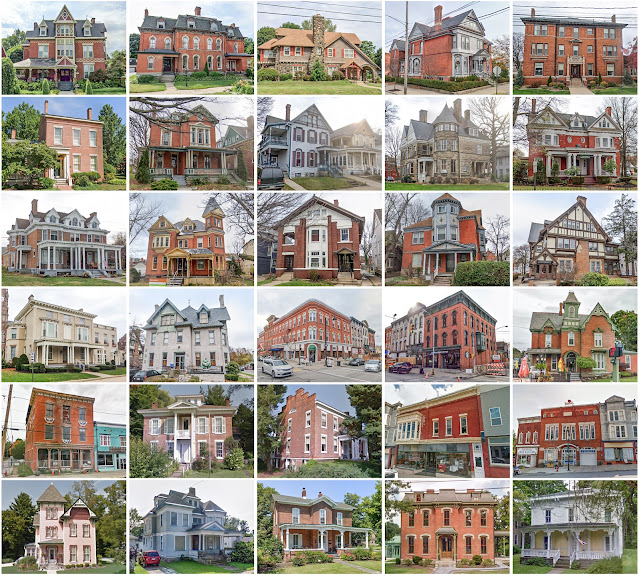Erie County, Pennsylvania
Founding: 1803 (declared in 1800)
Parent county: Allegheny
Namesake: Lake Erie
Seat: Erie (1803–)
Seat: Erie (1803–)
Land area: 799 square miles
Population (2020): 270,876
Population (historic): 1,468 (1800); 17,041 (1830); 49,432 (1860); 86,074 (1890); 175,277 (1930)
Periods of population growth: pre-1800–1980; 1990s
Subdivisions: Two cities; 14 boroughs; five CDPs; 23 townships
Pre-1940 residences (estimated): 32,107 (26.6%)
Pre-1940 housing survival rate: 67.5%
Pre-1860 housing survival rate (1940): 31.2%
Pre-1940 housing survival rate: 67.5%
Pre-1860 housing survival rate (1940): 31.2%
Farm housing in disrepair (1950): 9.1%
Nonfarm housing in disrepair (1950): 5.2%
Average farmhouse value (1930): $2,024
Average outbuilding value (1930): $1,725
Average farmhouse size (1940): 7.2 rooms
Number of farms (1920): 5,485
Average farm size (1920): 46.6 acres
_________________________________________________________________________________
Average farmhouse value (1930): $2,024
Average outbuilding value (1930): $1,725
Average farmhouse size (1940): 7.2 rooms
Number of farms (1920): 5,485
Average farm size (1920): 46.6 acres
_________________________________________________________________________________
Erie
Namesake: Lake Erie
Founding: 1795 (platting); 1811 (post office); 1851 (incorporation)
Population (2020): 94,831
Population (historic): 81 (1800); 1,465 (1830); 9,419 (1860); 40,634 (1890); 115,967 (1930)
Periods of population growth: 1800–1960
Pre-1940 residences (estimated): 18,956 (41.7%)
_________________________________________________________________________________
Pre-1940 residences (estimated): 18,956 (41.7%)
_________________________________________________________________________________
_________________________________________________________________________________




Comments
Post a Comment